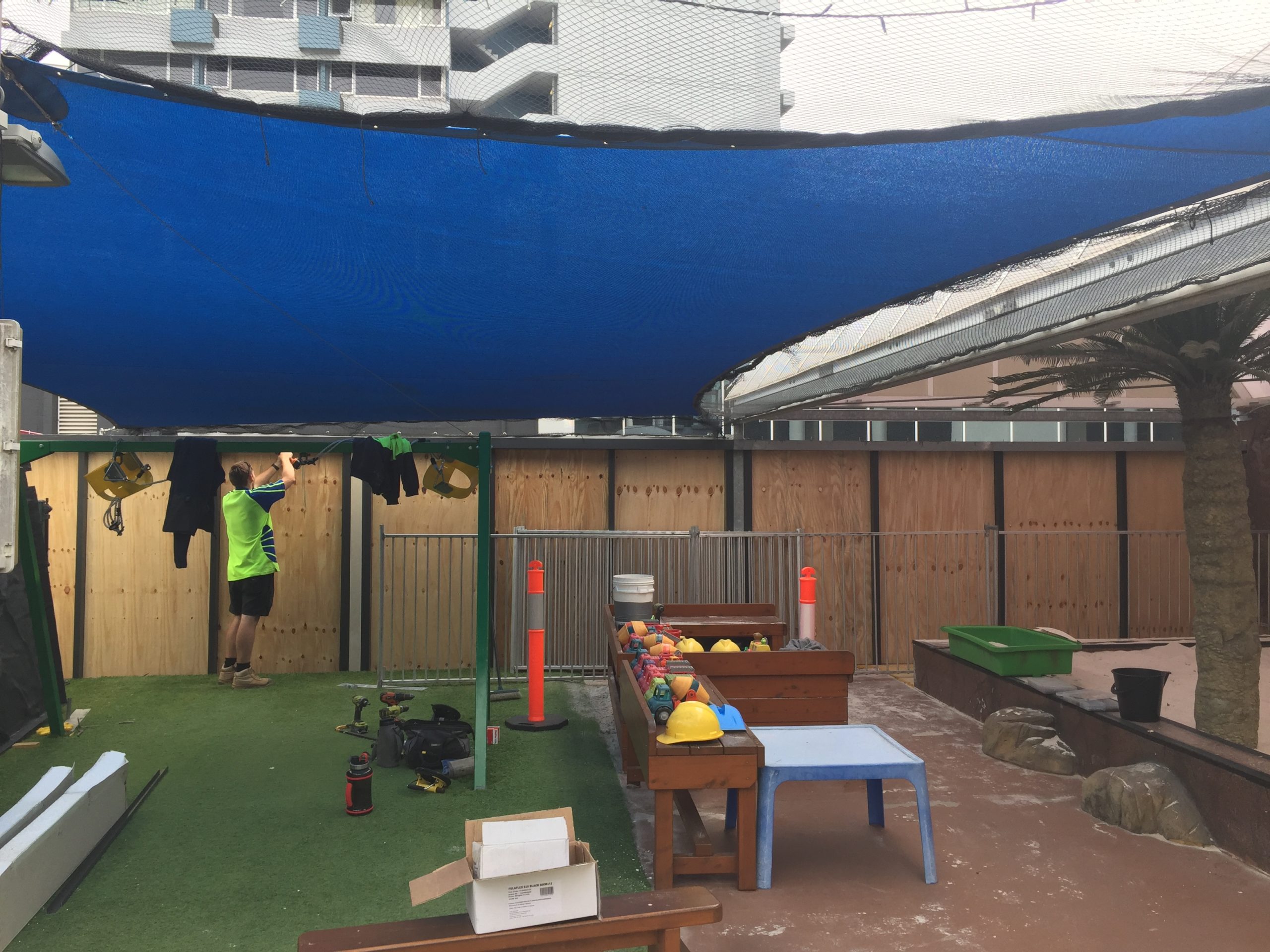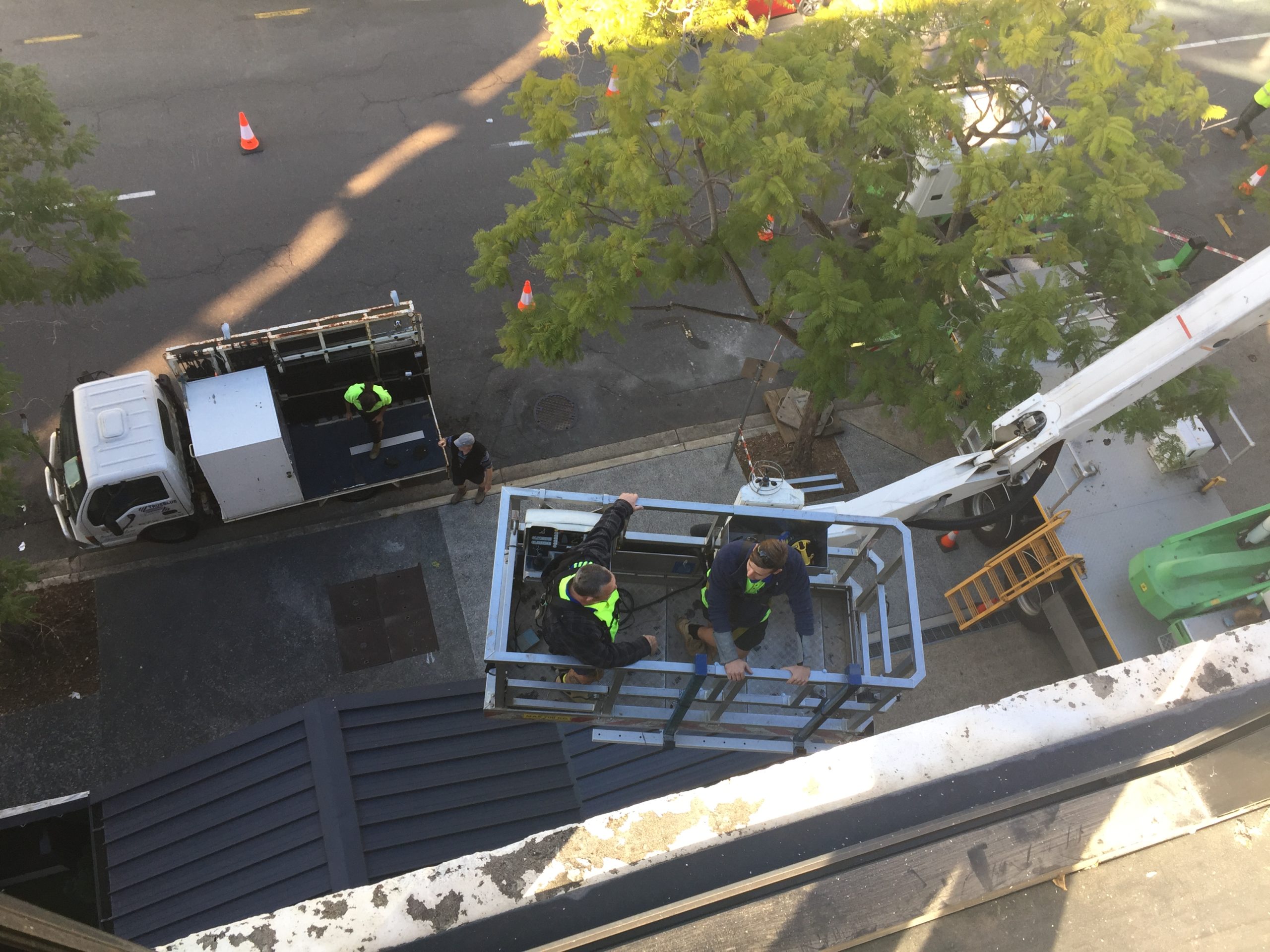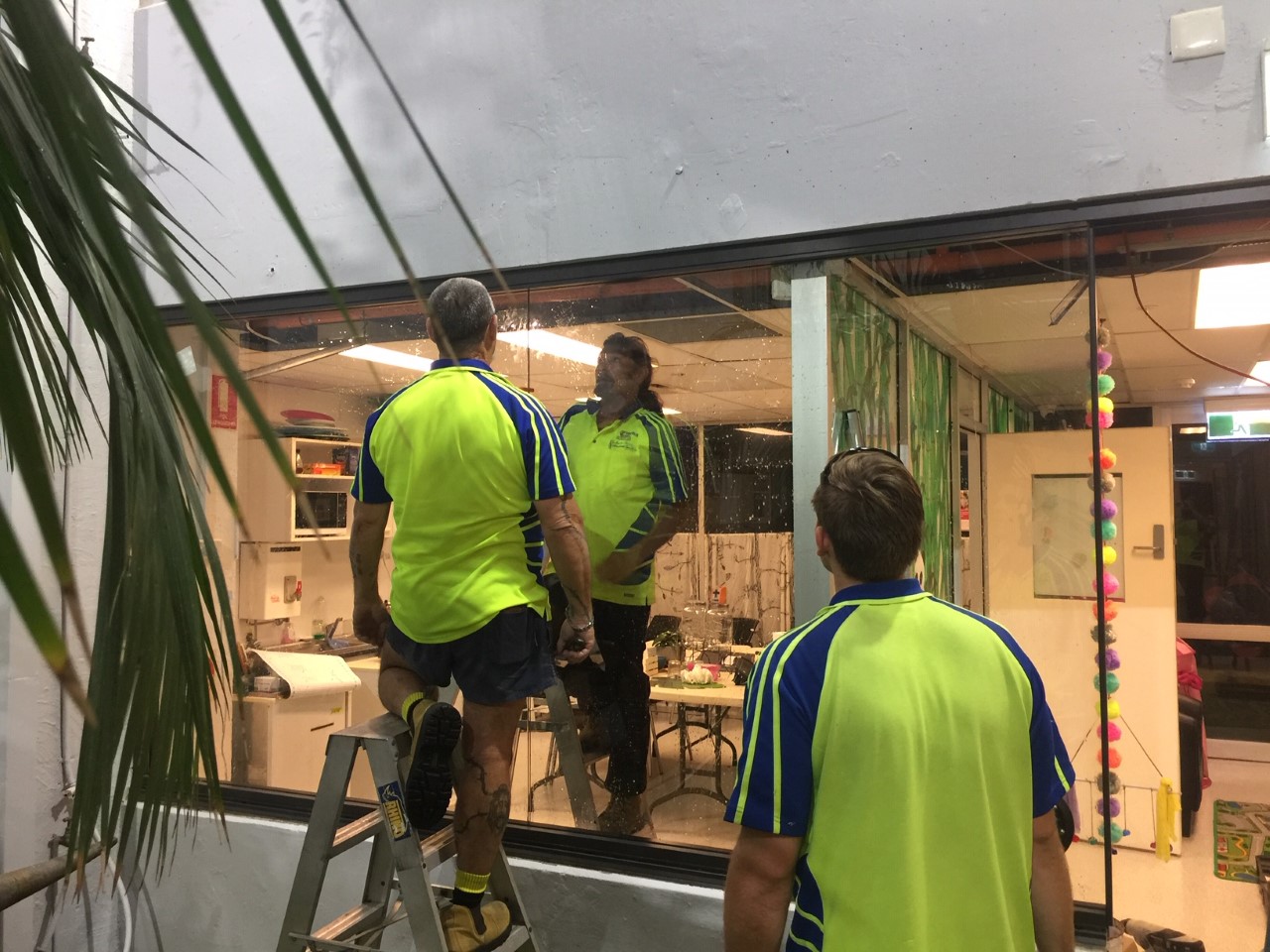Shower screen glass, every home has it, but how do you choose which type is the best for your bathroom? Whether you’re renovating your bathroom, building a new one or updating the glass, here is everything you need to know to help you make the right choice.
You Are Spoilt For Choice When It Comes To Shower Screen Glass
Shower screen glass comes in a variety of types, colours, textures, and styles. The most difficult part is deciding which one to install in your bathroom. When it comes to aesthetics, it is ultimately up to you, but it pays to consider how the glass will look with the rest of the bathroom. For instance, if you have a stunning design feature tile wall in the shower, you don’t want to cover that up by using frosted glass.
Your Glass Must Meet Standards To Ensure It Is Safe
Firstly, your shower screens and doors must meet Australian Standards AS/NZS 1288 and 2208. Shower screens must be Grade A safety glass. This prevents injury if it happens to break, rather than breaking into large, sharp pieces, it shatters into small blunt pieces that are unlikely to cause serious harm. Your glass must be either laminated safety or toughened glass. If it is framed, it needs to be at least 5 mm thick. If it is partly-framed, it needs to be at least 6mm thick and if it is completely frameless, it needs to be a minimum of 10 mm thick.
Different Types Of Shower Screens
As mentioned above, there are many different shower screens available. Here are some of the most popular ones:
Fully Framed Shower Screens
Fully framed shower screens are the original style of shower screens and you’ll find them in most older homes. They aren’t used as much in new bathrooms as more modern looking styles are preferred; however, they do come with some benefits. You can choose the colour that you want the frame to be, and they are an affordable choice if your budget is tight. They are sturdy and long-lasting as the glass is supported on each side.
Semi-Frameless Shower Screens
A semi-frameless shower screen is a mix between a fully framed screen and a frameless screen. It can give your bathroom a sleek look without breaking the bank. Instead of the entire glass being framed, only a section is. Again, you can choose the colour that you want your framing to be. Many people match the framing with the bathroom hardware to create a well-thought-out cohesive space.
Frameless Shower Screens
Frameless shower screens have become increasingly popular over the years, and that’s primarily due to the contemporary and stylish finish they offer. The fact that they are easier to clean is a bonus. As there is no framing, it doesn’t obstruct the view of the bathroom or detract from its overall appeal by limiting the amount of natural light from filling the space. They can make a bathroom look bigger. There are several ways you can install frameless glass, and you can choose an installation method that serves your bathroom best from a functional and aesthetic point of view. The only drawback to this style is that they are usually priced higher than other types.
Make Sure Your Glass Is Easy To Clean
Shower screens are notorious for collecting soap scum and the last thing you want is glass that is difficult to clean, well that is unless you like cleaning of course. When deciding on which type of screens to pick, you need to factor in framing as this is where mould likes to harbour. It can be difficult to remove and looks unsightly too. This is where frameless shower screens are a good choice. There is nowhere for the mildew and gunk to get stuck, therefore they require less cleaning. If you were considering frosted screens for the privacy benefits, it is not the best choice when it comes to cleaning as soap scum tends to show up more obviously. Worry not, there are other options such as acid-etched glass which provides privacy without the cleaning hassles.
The Placement And Size Of Your Shower Screens
If your bathroom is on the smaller side, it’s a good idea to think of ways you can make the most of your space with the placement of your shower screens. Consider limiting the shower to a singular screen rather than creating a box-like finish with screening all around it. If you have plenty of room to work with, you have more freedom when it comes to the design of your shower screen.
Get In Touch With The Professionals
As all glass in Australia must meet and be installed to strict standards, it’s best to leave it to the professionals. At True Blue Glass, we only use superior glass and products, and all our work is completed to the highest industry standard. We have a huge variety of shower screen choices available, and we can work with you to find the absolute best solution for budget and bathroom. If you are looking for someone to install or replace your shower screens and you are in South East Queensland, our highly skilled team of glaziers can help. Contact us today for more information.
When it comes to double glazed windows, many assume they are only beneficial for people in cooler climates or when its winter but, did you know they offer just as many if not more benefits in the summertime? If you are thinking of upgrading your windows, here are all the reasons why you should consider double-glazed panes.
What Are Double Glazed Windows?
Double glazed windows combine two panes of glass to make an individual window. The panes are separated by gas and it is sealed in. The layer of gas provides optimal insulation against outside elements and within the home. They are popular amongst homeowners due to their sustainability and energy-saving benefits.
Reduce The Amount Of Heat That Can Get Inside
When the heat is relentless outside, the last thing you want is it getting inside. Unlike single-paned glass that allows heat to transfer through the window, double glazed windows are highly insulated and reduce the amount of heat that can get indoors by repelling it. This leads to a much cooler home. Once the weather cools down again, they prevent heat from escaping, so its win-win all year-round.
Lower Your Energy Bill
Aussies are all too familiar with hot, muggy and downright uncomfortable weather. There are not too many people who don’t rely on their air-conditioning as a means to keep cool in the warmer months. As we know, cooling is one of the biggest energy consumers of all and unless you have solar, you will inevitably have higher electricity bills when using it often. Because double glazing deflects heat from your home, it won’t get as hot inside meaning you won’t need to use your cooling as much as normally needed. Over time this can save you thousands of dollars.
Noise Reduction
Summer offers pleasant temperatures at night and more are enticed to stretch their days into the evening. BBQs, entertaining, and swimming in the pool are a few of the many activities we enjoy and love about this time of year but, they also bring with them additional noise. Double glazed windows can block out unwanted sound by up to 65% compared to normal panes. While double-paned windows aren’t soundproof, they are an effective way to minimise how much noise is transferred into your home allowing you to enjoy some quiet time when you want it.
Prevent UV Damage
Regular panes, especially ones that are past their used by date, offer little to no protection against the suns harmful UV rays. It doesn’t take long for them to start fading and discolouring your carpet, curtains and furnishings. Double glazed windows can protect your flooring and belongings by drastically limiting the number of rays that penetrate through your glass all whilst still letting in ample light.
Make Your Home Safer
The Christmas holiday period is that one time of the year that we usually spend more time away from home, whether it’s visiting friends and family or going on a holiday. Thieves are well aware of this. Homes are stocked with Christmas goods and it is the perfect opportunity for them to break in. Of course, you want to have peace of mind knowing your home is safe and secure when you’re not there and double glazed windows a great way to do that. They are extremely strong and difficult to break. If they do try to break the glass, they will more than likely give up quickly as the noise may attract too much attention.
Avoid Condensation
Condensation is caused when moist air hits a cold surface and this is why you may see droplets on your windows if they are single-paned. It is not only inconvenient having to wipe them down but if it happens often, it can cause mould to grow on your windows and framing and even more so when the weather is hot and humid. Mould can be hazardous to your health so, its best to avoid this if you can. A simple way of saying goodbye to condensation forever is by installing double glazed windows. The inner pane is warmer than a single pane alone which prevents condensation from forming on your windows.
Keeps Your Home More Comfortable
Double glazed windows help to keep your home cooler in the summer and warmer in the winter which prevents the temperature from changing drastically. This makes your home more comfortable without the need for excessive artificial heating or cooling.
If your solution to getting through another sweltering summer is by cranking the air-con, why not consider double glazing your windows? They make your home more energy-efficient, safer and more peaceful. Updating your windows with double glazed glass is a great way to improve your home and its value too. If it is out of reach financially right now to replace all of your homes windows, you can start by doing the common areas first that use heating and cooling the most. While it is an initial outlay, the long term savings you will make on air-conditioning and heating will see you quickly recoup your investment. If you would like any more information on double glazed windows for your home, get in touch with our skilled team of glaziers here at True Blue Glass. We are industry leaders and will happily answer any questions you have.
Many put off cleaning the window tracks around their home as it can be a tedious and time-consuming task, but it is important to give them a little TLC every so often to keep them in tip-top shape and prevent them from prematurely wearing. Here are some tips to help you clean your window tracks like a pro.
What Are Window Tracks?
Most of us have an idea of what window tracks are, but for those who don’t, this is for you. The tracks are the channels that run around the sides and bottom of the window frame. They prevent the elements from getting inside, heating and cooling loss and allow your window to open and close.
Why Should You Clean Them Regularly?
Window tracks get dirty relatively quickly and before you know it, they are filled with dirt, dead bugs, and dust. Cleaning them ensures your home is hygienic, not only that, clean tracks allow the windows to open freely and you don’t risk them getting jammed or letting drafts in.
What Do I Need To Clean My Window Tracks?
Before attempting to clean your window tracks, you’ll need the supplies mentioned below to get the absolute best result:
- Cleaning cloths
- Baking soda
- White vinegar
- Detergent
- Spray bottle
- Gloves
- A toothbrush
- A vacuum cleaner with a dusting brush attachment
- A bucket of lukewarm water (only needed if the first attempt doesn’t remove all dirt)
How To Clean Your Window Tracks
Open The Window And Remove The Screen
To make sure you get into every nook and cranny, you should open your window as far as it will go. You can clean your window tracks with the screen in but for a professional finish, we suggest removing it if you can. Give it a good clean with a garden hose and dry with a clean cloth. If the dust is stuck on and not shifting, you may need to scrub it with a soft brush using some warm soapy water. Reposition the screen once you have finished cleaning the window tracks.
Vacuum
The next step is vacuuming. Attach the dusting brush attachment to your vacuum cleaner and run it along all surfaces of your tracks. This will lift and remove any debris that may be lingering. It’s important not to skip this step as wetting the dust and dirt before removing it can create a gunky paste which can be troublesome to remove.
Sprinkle With Bi-Carb Soda
If your window tracks aren’t very dirty and vacuuming has removed most of the dirt you may be able to skip this step. If they haven’t been done for a while, you should follow on with this step. Sprinkle bi-carbonate soda over your tracks ensuring that the entire surface has a light coating. Add more to dirtier areas.
Wet With Vinegar
Using your spray bottle, pour around a cup of white vinegar into it. Generously spray vinegar on all areas that have the bi-carb soda on it. Don’t forget the vertical window tracks. The vinegar and baking soda will form a frothing concoction that will lift any dirt and grime from the window tracks. Let this sit and do its thing for around 5 minutes before moving on to the next step.
Scrub Tracks
After the baking soda and vinegar have been sitting for around 5 minutes, apply your cleaning gloves and using your toothbrush, gently scrub the tracks. It should come away easily, once you have scrubbed away the dirt you can wipe down with a clean cloth to soak up any leftover bi-carb vinegar mixture. If there is residual dirt remaining after you have scrubbed and then wiped, squirt a little detergent into a bucket of warm water and wipe until removed. Dry the tracks entirely using a clean cloth or paper towel and leave the windows open for a while to dry up any remaining moisture. Repeat if necessary.
How Often Should I Clean My Tracks?
Obviously the more you take off your tracks the longer your windows are going to last. Many clean their tracks once a year although it is recommended to clean them twice a year. Leaving them for a year without investigating them can see them exposed to moisture which can lead to rust and mould growth. Keeping on top of the maintenance makes the job much easier and will take less time to clean than if you left it for longer than you should.
Tip: If you’re planning on cleaning your windows and window tracks at the same time, make sure you clean the window panes first otherwise the liquid from your panes will run into your freshly cleaned tracks and you’ll have to redo them. Vacuum your tracks, clean the windows, and then clean the window tracks last.
Call In A Professional
If your home is exceptionally large or you just simply don’t have the time to clean your window tracks, it’s a good idea to hire a professional window cleaner to take care of it for you. This will ensure your tracks look great and are highly functional for many years to come.
Are you looking for some advice regarding the windows in your home? Get in touch with our highly experienced team here at True Blue Glass, with more than 10 years in the industry we know a thing or two about windows and their tracks and would be happy to help if we can.
It doesn’t take much to make the windows in your home look grubby and unkempt. It can sometimes be a tricky task to master, that’s why we have put together this guide to share the most common mistakes people make when cleaning glass and how to avoid them to ensure they are streak-free and glistening.
Here’s what you need to know:
Using Glass Cleaner
While glass cleaners claim to be the be-all and end-all when it comes to cleaning glass, more often than not, the product leaves smudges and streaks, not only that some have hazardous ingredients that can be harmful to you and your family. The effort required to get your glass clear with glass cleaners can be frustrating and time-consuming, some make the mistake of spraying more cleaner onto the window in an attempt to clear the streaks and in most cases, this will just make them more prominent.
Not Using The Right Cleaning Cloths
Rubbing the wrong type of cleaning cloth across your glass is guaranteed to leave smudge marks. Most rags and dishcloth type materials will leave behind small pieces of lint. Decades ago, many people used scrunched up newspapers to clean their glass, however, printing ink isn’t the same as what it was back then and it will more than likely leave a residue on your glass. This will make your windows appear dirtier than they were before. Paper towel is another favourite but isn’t the most environmentally friendly option and can leave specks of towel behind which doesn’t give you that crystal clear finish that you’re aiming for. Other lint producers are clothes and tissues, so avoid these.
Scratches On The Glass
Cleaning glass with the wrong materials or scrubbing them can lead to scratches which are irreversible and look unsightly. This often happens from people using something abrasive to scratch off stuck-on contaminants such as bird poo. Make sure you are gentle when cleaning your glass and only use suitable products to prevent this from happening.
Making Circular Motions When Cleaning
Using circular motions to clean your glass can result in you making more smudges on areas that you have already cleaned. Try starting at one end of the glass and working your way down, up, or across. This way if you do accidentally go over an area that is already done it is not going to be as hard to fix.
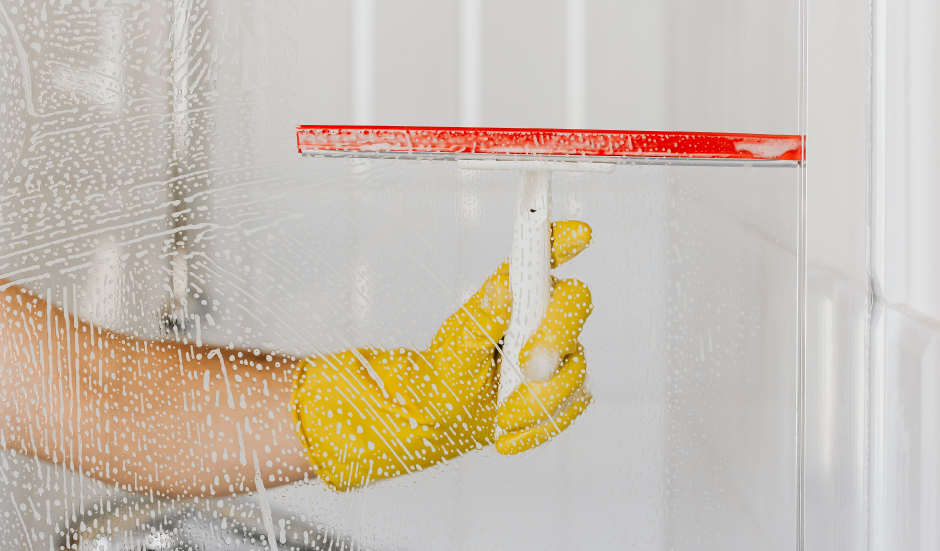
Attempting To Clean Dry Glass
The glass must be moist before you wipe it over. Running a dry cloth over dry glass can cause the dirt and dust to scratch the surface. If there is built-up dirt that appears to be set onto the glass, spray with a little water first and let it sit for around 10 minutes before wiping it off.
Not Cleaning The Dirt And Dust Off First
Following on from the tip mentioned above, to get the best finish you should prep your glass first by removing any dirt or dust on it. If you go straight into it with your cloth and cleaning product, you will just be wetting the dirt and spreading it over your window, making it look worse. This will dirty more cloths, use more product, and take far longer to perfect than it should.
Cleaning Glass With A Universal Cleaning Cloth
You must have different cleaning cloths for different purposes in your house. Using one cloth to clean various surfaces is unsanitary and can lead to contamination. Your glass and window cloths must be clean, using one, hanging it up and then reusing it later will leave you with plenty of streaks and smudges that will be virtually impossible to remove.
Cleaning Glass With Soap-based Products
Soap based products such as detergents can leave a soapy residue and the ingredients in some can strip the coating of your glass which can detract from its appearance and longevity.
Not Fog Proofing The Mirrors
Most of us are guilty of wiping over the mirror with our hands after a hot shower. It is worth investing in fog-proof mirrors to avoid this or if they aren’t in your budget right now, you can mix one-part vinegar with one-part water and wipe over each morning.
Forgetting The Window Frames
When cleaning glass windows or doors, you will have to clean the frames too. Do these first before the panes that way you won’t risk smudging your newly clean windows.
Cleaning Glass In The Middle Of Summer
Summer in Australia is hot and while cleaning glass windows and doors at this time of year may seem like a brilliant idea, it can be more hassle than it’s worth. The heat will cause the water and cleaning product to dry rapidly leaving you with streaks. It’s best to clean your windows when the weather isn’t scorching.
The glass in your home keeps your family warm in the winter, cool in the summer and intruders at bay so, it is important to take care of it to ensure it is doing its job properly and going to stand the test of time. If you have any questions about glass cleaning or have a glass problem at your home, get in touch with our friendly team at True Blue Glass. With more than ten years in the industry, we know a thing or two about glass and will happily help if we can. Alternatively, check out our website for more information.
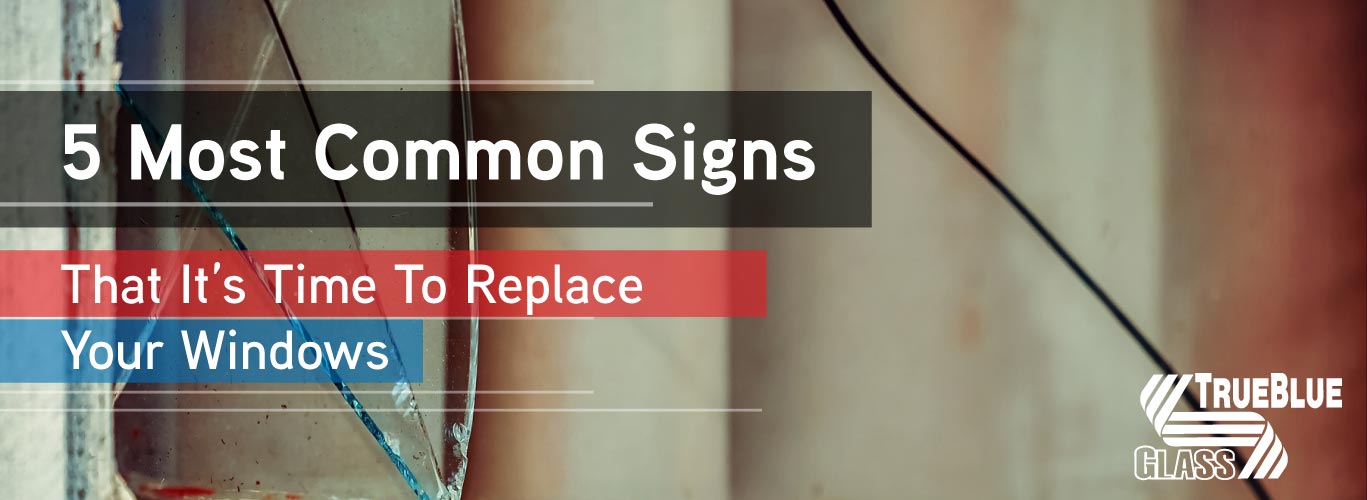
When your window is smashed or panes of glass are cracked it’s obvious that you need to replace your glass, but what other factors indicate that you should be replacing your glass? Here are 5 of the most common signs that it’s time to get new glass.
You can feel a draft coming through the window
It’s important to recognise the difference between a draft coming in through the window frame or pane. Why? Because a draft coming through the edges of the frame can be repaired by sealing them with weather stripping or caulking whereas a breeze coming through the actual pane indicates that the glass itself is compromised and it isn’t doing its job properly. You cannot repair this problem in most cases, and it needs to be replaced. You can pinpoint where the air is getting in by placing your hand on the pane and then the edges to feel for a draft. If left, you can expect higher energy bills until it’s fixed. Heating and cooling systems must work harder and normally must be used for longer to get the room to the desired temperature.
Opening your windows is difficult
If your windows are jammed and you are having to forcefully open them it can be dangerous especially if you slip and you hit the pane of glass. Sometimes you can repair the window frame without having to replace it entirely however if they are wood and it has rotted out completely or it has swollen that is a good sign that you need to replace it with a new one.
Windows that don’t block out any noise
Most of us don’t want to be hearing cars driving by or the neighbours talking when in our home. If you can, it’s likely your windows aren’t soundproof enough and when all your windows aren’t blocking sound efficiently you may find your house excessively noisy. You can try to repair the problem before replacing the panes altogether by sealing off any gaps. If this doesn’t help, you will likely need to replace the windows with thicker or different types of glass.
Your windows are old
Windows last around 15 years on average and if your home is an older make and still has its original windows, they won’t be up to today’s standards in most cases. If you don’t know how old your windows are you can check for a label with the date they were manufactured. They are normally located in a corner of the pane or in the track, some don’t have one. If they are more than 15-20 years old and worn, it is a good idea to replace them to ensure they are working to their full potential.
Moisture in the windows
If you have double glazed windows and see moisture between your window panes this is a sign that you may have what’s known as a ‘blown’ window. There are few potential causes for this including inferior installation, damaged seals or they may have simply aged. If it is just the seals that are damaged, the problem can usually be fixed by removing the old seal and replacing with a new one. If this doesn’t resolve the issue you will have to get your window replaced. Leaving it will result in moisture getting into the home which can cause an array of problems such as mould and rot.
Why should I replace my windows?
If your glass isn’t broken or cracked, it’s easy to leave them until you must get new ones but replacing old and inferior quality windows has many advantages that can save you money down the track.
Reduce your energy bills
One-third of a home’s heating and cooling escapes from the windows and doors so if the windows in your home and if your windows aren’t up to par, you’ll probably be getting expensive energy bills each quarter. Quality windows can save a significant amount of money, insulate the home to keep it at a comfortable temperature and they are also better for the environment.
Improve Safety
Your home’s windows play a vital role in keeping your family and belongings safe and secure. You also want to ensure they are safe to be around, especially if you have young children. Older panes are often just float/annealed glass, which break into large shards which can be extremely dangerous. Modern safety glass options are stronger and aren’t as susceptible to breaks. If they do break, they do so in a safer manner such as shattering in small relatively harmless pieces. Or will crack and hold in place.
Improve The Aesthetics Of Your Home
Old and weathered windows don’t look great. The right windows let in the perfect amount of light and can revamp a space to accentuate your home. Replacing old windows with new, energy-efficient alternatives can add value to your property. Most people are conscious of the ever-rising cost of energy, so they make a great selling point.
Speak With A Professional
There is no denying the benefits that replacing old and outdated glass can provide, however, if replacing all the windows in your home isn’t in your budget, consider making some simple repairs or replace them gradually. Your back pocket will thank you for it. If your windows are experiencing any of the issues mentioned above, get in touch with our experienced team of glaziers here at True Blue Glass to discuss your options.
If you have a cracked or broken window at your home, you may be wondering if it is possible to fix it yourself. Whilst it may be tempting to attempt a DIY job to save money, you should be aware that there is a lot of ill-informed advice on the internet and if not done correctly, can cause more harm than good. Broken or cracked glass is extremely dangerous, not only that, it makes your home vulnerable to the elements as well as potential break ins. Throughout this article we will highlight why you should leave your glass repairs to the professionals.
Removal of broken glass
A quick google search will reveal numerous methods on how to remove broken glass “safely”. However, broken panes of glass can be extremely hazardous if removed incorrectly. A common DIY technique is using a towel or piece of clothing to hold onto the broken glass whilst smashing the glass with a hammer. It doesn’t take a genius to recognise the potential risks involved with this, if you don’t cut yourself on the glass, the shattered glass can stick to clothing and mingle with other clothes once washed or fall onto the ground and into a unsuspecting persons foot.
Using epoxy or caulk to fix wooden frame
Its not always the glass that is damaged but sometimes it’s the frame surrounding it that needs repairing. The most common window framing found in residential homes is made of wood. Over time, the timber can split, swell and break down. You’ll find that a lot of unreliable DIY advice will tell you it’s a simple and inexpensive job that can be completed at home and that you can use caulk or epoxy to fill gaps or holes caused by rot, breaks or splinters. If the wood has started to rot this is a temporary “Band-Aid” solution and whilst it may make the window look more cosmetically appealing, the moisture underneath will continue to rot the wood and it will eventually need replacing anyway. If it’s not applied correctly, it can make the window look worse than it did before you attempted to “fix” it.
Additionally, epoxy is notorious for its toxic fumes and it can be extremely dangerous if inhaled. The time it takes to apply it is enough time for the fumes to have a hazardous effect. Early symptoms of epoxy fume poisoning include nausea, vomiting and fatigue. Longer periods spent around or near the epoxy can lead to potentially fatal incidents such as inflamed lungs and asthma attacks. A professional would not use this technique to repair your window. They would replace it properly and ensure it is done so safely.
DIY Glass Repair Kits
You may have come across DIY glass repair kits online or in DIY shops. The kits claim to provide you with the necessary tools needed to fix cracks or chips on your own without having to hire a qualified glazier. However, if you have zero experience handling glass, and the technique is flawed, these kits can exacerbate the damage to your window or even worse, cause serious harm. To fix a crack or chip in a glass window, bridges need to be used and they require a considerable amount of pressure to be placed on the crack and if this isn’t done adequately the glass can break and cause injury.
Nail Polish window repair
The nail polish repair is one of the many unconventional DIY repair “hacks” we’ve come across. If you haven’t heard of it, let us explain. This method involves using layers upon layers of nail polish in your window chip to disguise it. Whilst it may hide the damage superficially it isn’t anywhere near as strong as resin and its more than likely that little chip will end up being a big crack and it will need to be replaced eventually anyway.
The dangers that come with cleaning damaged glass
Cleaning cracked or broken glass is highly dangerous. If the glass needs replacing precaution will need to be taken by wearing thick gloves to prevent getting cut.
Inadequate equipment
An additional reason to not repairing your windows yourself is, that unless you work with glass, it is unlikely that your will have all the equipment needed to fix your window to a professional standard. Repair kits are usually low quality and the products used are generally not long lasting.
Minimise the risk of the window shattering
If you attempt to repair your window yourself and it is improperly done, there is an increased risk of something going wrong. It is going to be more vulnerable to wind, heat and even the slightest impact can cause it to shatter entirely which can put your family’s safety at risk.
Before venturing on a DIY glass project it’s important to be aware of the dangers that are involved if something goes wrong. Hiring a professional for your window repairs ensures that high quality products are used, and it has been fitted to a superior and safe level. Here at True Blue Glass we specialise in all areas of glass and can help to repair or replace any compromised glass that may need attention in your home. If you have any questions about glass, or if you’d like to book one of our qualified glaziers, get in touch and our friendly team today.
Glass is one of the most important construction building materials in both domestic and commercial settings. Today, there are many glass types available on the market and each one offers a unique difference. Here we will share the most common glass types, their pros and cons and what they are best used for.
Annealed Glass
Annealed Glass is a basic clear glass that is often used for windows and doors. It allows ample light in and can be either clear or coloured. It is commonly used as a base glass to form more technical glass varieties. Annealed glass is the minimum standard for glass installed in a home.
Pros
1. Budget friendly
2. Strong against wind and heat changes
3. Allows full light transmission
4. Superior visibility
5. Available in opaque and different tones
Cons
1. Breaks into large irregular shapes
2. Can only be used for limited sizes due to its strength
Toughened Glass
Toughened glass is commonly known as safety glass. It starts off as annealed glass and is heated and cooled quickly to make it more durable. The glass becomes 5 times stronger via this process. Toughened glass is used to replace annealed glass in areas that require structural strength such as large panels of glass, in bathrooms and elevation windows.
Pros
1. Strong, safe, and highly resistant to heat
2. If broken, it shatters into tiny pieces making it safer than annealed glass that breaks into big shards
3. Physically and thermally stronger than regular glass
4. Suitable for use in large openings
5. Available in opaque different tones
Cons
1. Cannot be recut once its produced. This is something that should be considered if you want toughened glass for a sliding door and then decide later you want to install a pet door. The whole panel will need replacing.
Laminated Glass
Laminated glass is classed as a safety glass and it is made up of two or more sheets of glass. They are adhered together permanently and it is highly resistant to impact. Laminated glass is a budget friendly alternative to toughened glass and can be used for much of the same purposes.
Pros
1. High security
2. Does not break easily
3. Higher resistance to UV rays than other glass types
4. Sound insulation
Cons
1. Can be hard to break in an emergency
2. If exposed to water for an extended period of time it can compromise the interlayer.
Tinted Glass
Tinted glass is coloured in the manufacturing process. The most popular tinted glass colours are blue, green, and grey. Tinted glass reduces the severity of glare and heat from the sun and are an ideal glass solution for bright outdoor areas.
Pros
1. Reduce furniture fading from harsh UV rays
2. Maximise privacy in the day
3. Minimise heat and glare
Cons
1. Decreases visible light
2. Reduces visibility
Frosted Glass
Frosted glass is used in both domestic and commercial environments and is commonly used to enhance bathroom areas. They come in a variety of patterns and can be used to improve the natural light in the room as well provide ample privacy.
Pros
1. Increases privacy
2. Diffuses light
3. Easy to clean
4. Great alternative to blinds or curtains for windows
Cons
1. Frosted glass can be made of annealed or toughened glass, depending which type you choose the same disadvantages would apply.
Mirrored Glass
Mirrored glass is also known as reflective glass and provides a mirror effect. It can be used as a mirror or for furniture and tabletops.
Pros
1. Mirrored glass reflects light which makes it perfect for smaller areas to create the illusion of space. It can be cut in a variety lengths, shapes, and styles so you can customise it suit your design ideas.
Cons
1. Once adhered to a wall, mirrored glass is troublesome to remove. They are normally positioned using silicone and in some cases it can damage the wall if taken off.
Low E Glass
Low E Glass is an abbreviated term for Low Emissivity Glass. It has a microscopic and transparent metallic coating that minimises the movement of heat or cold through the glass making your home more energy efficient.
Pros
1. Reduce energy consumption
2. Can be used with both laminated and double-glazing glass
3. Increases insulation
Cons
1. Can have a blurred appearance in some lights/angles
Wired Glass
Wired glass has wire mesh reinforced into the glass and has been used for decades as a preventative measure to stop glass falling if a fire were to occur. It is commonly used in government buildings such as schools, institutions and offices and is normally installed in fire escape routes, fire resistant doors, and skylights.
Pros
1. Highly resistant to heat
2. Prevents break ins
Cons
1. If broken, sharp wire is exposed and can cause injuries
2. Wire obstructs visibility
3. If exposed to prolonged bouts of humidity and rain the wire can rust
4. Only classed as a B grade safety glass
Double Glazing
Double glazed glass is made of two layers of glass that are separated by a gap that is filled with air or argon gas and then sealed closed. The gap between the two glass panels drastically reduces the rate of heat through the glass and thermal conductivity. They are a good option in areas where you want greater control over the amount of heat going in and out through the glass.
Pros
1. Reduce energy costs
2. Minimise condensation
3. Reduce noise
4. Superior insulation performance
Cons
1. Can be more costly
Here at True Blue Glass we specialise in all facets of residential and trade glass and our work is completed to the highest safety and construction standard by qualified glaziers. If you have any questions regarding glass for your home or job, give our friendly team a call and we will happily assist.
For some walking over high altitude bridges can be scary enough on their own but one bridge in China has taken high altitude bridges to the next level.
The bridge, on Taihang Mountain near Handan city in China’s Hebei Province is a high altitude glass bridge that has added the illusion of the glass cracking underneath your feet as you walk across. Depending on your perspective its either a hilarious prank or a cruel joke.
The Bridge hangs over 3,800 feet in the air, affixed to the mountainside.
While the path provides an incredible view of the mountainous scenery, it’s also not for the faint of heart.
In the videos that have been have been making the rounds over the last few years, which creates the illusion that the bridge is going to shatter under the weight of those walking on it, can be seen striking crippling fear into a series of hikers.
To create the effect, bits of actual broken glass were placed under the sturdy glass floor, as well as video screens that display fake cracks in the glass as people pass over it. The sound of cracking glass is also piped in, to complete the terrifying effect.
How do you think you would go walking over this bridge?
The True Blue Glass commercial team are currently working at the Brisbane Childcare Center taking out all the old glass windows and doors and replacing with a newer more modern frames.


